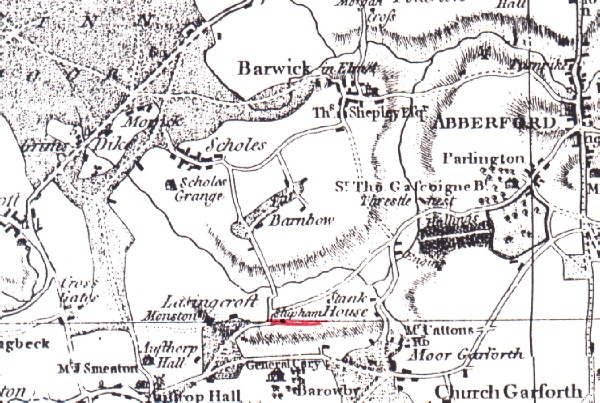
| “But having again gotten to some little enclosures, beyond which was another Moor, called Sea Croft Moor (much less than the first) here our thinking themselves more secure, were more carelesse in keeping order, and while their officers were getting them out of Houses where they sought for drinke, (being an exceeding hot day), the Enemy got, another way, as soone as we, upon the Moor.” |

| “…the enemy got, another way, as soone as we, upon the Moor. But when we had almost passed this plaine also, they seeing us in some disorder, charged us both in Flanke and Reer. The Countrymen presently cast downe their Armes and fled; and the Foot soone after, which, for want of pikes were not able stand their horse. Some were slaine, and many taken prisoners. Few of our Horse stood the Charge. Some Officers, with me made our Retreat, with much difficulty, in which Sir Henry Foulis had a sleight hurt. My Cornet was taken prisoner, yet got to Leeds about 2 hours after my father and the Forces with him were arrived thither safe. This was one of the Greatest losses we ever received ….” |
| “…we were so busied about releasing the prisoners that wee taken at Seacroft most of them being countrymen, whose wives and children were still importunate for their release, which was as earnestly endeavoured by us, but no conditions were accepted: so as their continual cries, tears, and importunities, compelled us to think of some way to redeem these men; and we thought of attempting Wakefield.” |
Harold Smith |